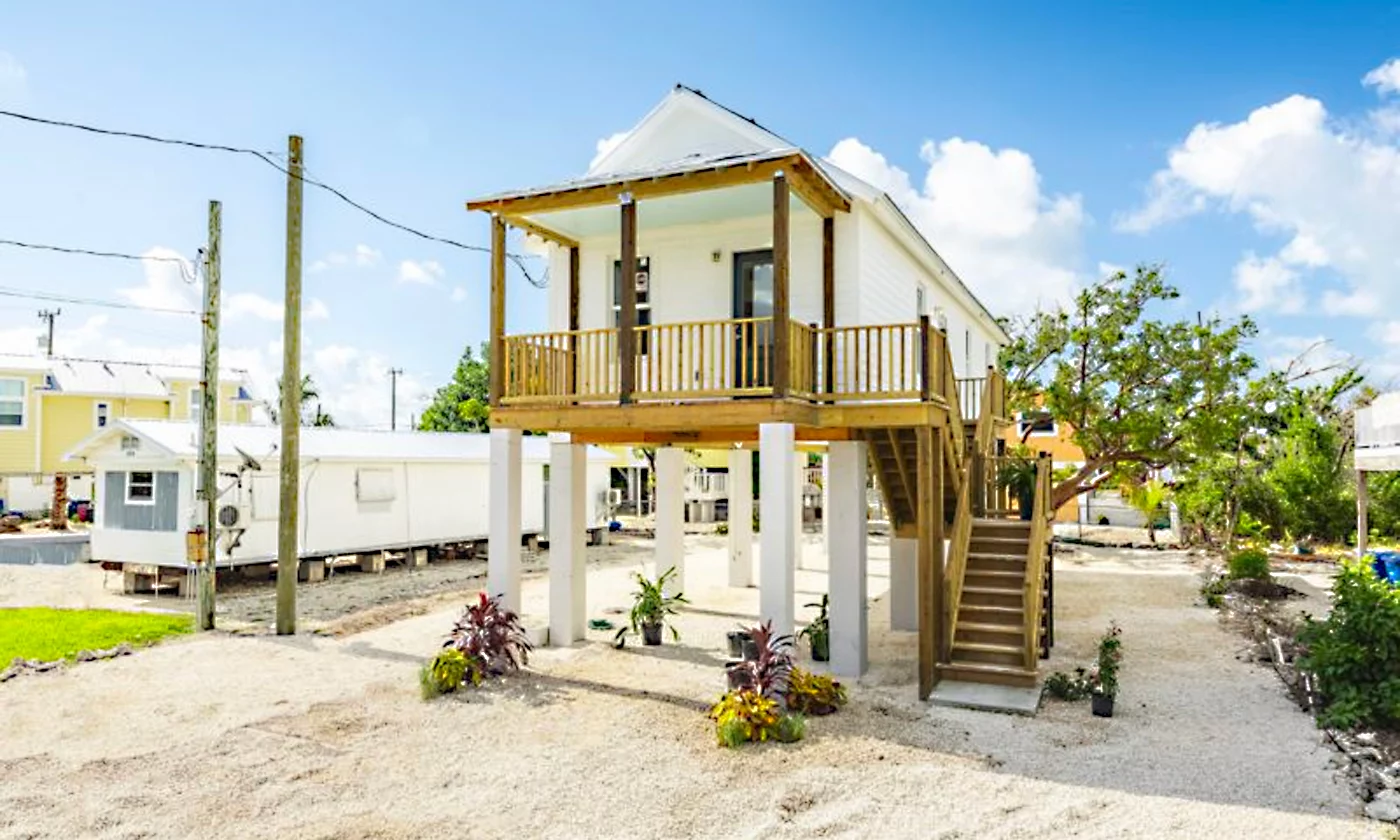Here’s how NC plans to fix a third of the $1.5 billion in remaining Florence damage
More than 12,000 homeowners and 3,500 renters who suffered damage during Hurricane Florence in 2018 are still awaiting repairs or assistance, according to an unmet needs analysis prepared by the North Carolina Office of Recovery and Resiliency.
The state received a $542.6 million disaster relief grant from the federal government to address damage done by Florence. The office, which administers disaster relief grants, noted in a press release this week that the Federal Register notice letting them know how that money can be used was published exactly 500 days after the hurricane made landfall.
Laura Hogshead, the agency’s chief operating officer, said that in administering a $236.5 million Hurricane Matthew grant, the state has created programs and learned lessons that will allow it to more quickly get Florence recovery dollars to people who need them.
“We just need applications to move through the process,” Hogshead said. “We need permission from [the U.S. Department of Housing and Urban Development].”
To get that permission, the Office of Recovery and Resiliency has crafted an action plan describing how it plans to use the Community Development Block Grant for Disaster Recovery.
The action plan notes that Florence left $1.51 billion in unmet needs. So even after the $542.6 million is spent, there will still be $970 million more in damage to repair before the recovery can be called complete.
The Office of Recovery and Resiliency plans to largely use the money it does have on housing, either repairing and elevating existing stock or building new affordable options.
According to the plan, $325.6 million of the HUD grant will help people rehabilitate or rebuild their storm-damaged homes, while $59.7 million would be used to develop affordable housing in Eastern North Carolina. The recovery program would also provide $32.56 million apiece for buyouts and a small rental repair program, and $16.28 million to restore public housing damaged during the storm.
At least 80% of the Florence grant will need to be spent in HUD-designated most-impacted and distressed areas , a wide swath of the state that runs along the state’s southern border from Robeson County to the Atlantic Ocean and then along the eastern seaboard from Brunswick County to Carteret County. The most-impacted communities also include Duplin County, as well as specific ZIP codes in Bladen, Cumberland, Pamlico and Scotland counties.
Repairing housing
In the Jones County town of Trenton, 106 homes were destroyed when the Trent River flooded, said Mayor Darlene Spivey. Spivey and her husband moved eight times in the 10 months after the storm after their own home suffered flood damaged.
They’ve returned to their home now, but Spivey describes it as “almost finished, but not exactly.” Of nine homes on the street, only three families have returned, including the Spiveys. It is difficult, Spivey said, to grasp the belongings inside a home that make it familiar until they’re all gone.
“My husband and I are still reaching for things we don’t have anymore,” Spivey said.
Spivey said many of her neighbors and constituents still live in flood-damaged homes, whether because it is all they’ve ever known or because they can’t afford other options.
“We’ve got situations where people are still in their homes that probably shouldn’t be,” Spivey said, “and they need help.”
According to the unmet needs analysis, there is $734.8 million in home damage left to repair. Of that, $557.4 million is damage to owner-occupied homes, while $177.3 million is damage to renter-occupied homes. According to the report, Craven, Pender and Robeson counties have the most remaining damage with $145.1 million, $86.8 million and $64.7 million, respectively.
Preparing for future storms, NC is working around one bad source of data: FEMA flood maps
If a home is determined to be damaged less than 50%, it will be repaired, Hogshead said, while a home that is damaged higher than 80% will automatically be replaced. In instances where the homes suffered between 50% and 80% damage, the homeowner is able to decide whether to repair or replace it.
The recovery agency is also proposing spending $59.7 million to develop affordable housing, an initiative that would include funding apartments, single-site developments between one and four units and a down payment assistance program to help renters purchase homes.
Nonprofit developers and others seeking to build affordable housing in storm-impacted areas would apply to the state recovery agency, Hogshead said. As part of the Hurricane Matthew recovery, for instance, the agency awarded the N.C. Housing Finance Agency $16.6 million to build an 80-unit complex in Fayetteville and a 48-unit complex in Goldsboro.
“What we keep hearing in Eastern North Carolina is that not everybody wants a typical three-story, multi-story housing development, that we need to be sensitive to the needs of Fair Bluff or the needs of Whiteville,” Hogshead said. “We want to open up the options so cities and town can decide what their affordable housing solutions are.”
Trade program
Sean Bynum, who co-chairs the New Hanover County Disaster Coalition, complimented the plan’s focus on rehabilitating housing and adding new options, estimating that there are about 500 people who have either not returned to their homes post-Florence or are awaiting repairs.
Bynum also works as the operations director at StepUp Wilmington, which helps people find employment by providing skills such as interview training and physical items such as an interview suit or bus ticket. With that in mind, he praised a part of the plan that would use $5.4 million to provide construction or trade training to low-income individuals living in areas hit hard by hurricanes and another $5.4 million to train more code enforcement officials.
“I see that as a benefit to our community on multiple levels. We’re going to have to have people able to reconstruct homes, but because of our area we always have new construction,” Bynum said.
The need for contractors extends beyond the Cape Fear Region. In Trenton, 106 homes were destroyed during Florence, said Mayor Darlene Spivey. Spivey’s own home was flooded, and she and her husband moved eight times in the 10 months following Florence.
“There’s not enough workers to move forward fast enough, and I don’t know how long people can hold on,” Spivey said. “Unfortunately, our area is rural, which is what we love about it, I’m not sad about it at all, but unfortunately there’s less population, which is less qualified people to help, which is less resources.”
Recovery officials developed the trade and permitting training programs based on feedback from storm-impacted communities like Trenton and from the recovery agency’s contractors.
NC has $25 million to buy flood-damaged homes, and a strategy for spending it
What’s missing?
Mac Legerton, a longtime Robeson County activist and co-director of United Church of Christ Disaster Ministries’ Southeastern North Carolina Climate, Justice and Disaster Recovery Project, has been critical of the state agency’s outreach to local communities. After reviewing the draft plan, Legerton noted that there is one paragraph regarding stakeholder engagement.
Legerton envisions an approach where the feedback of affected communities should be centered and prioritized in the disaster recovery process, including a much more robust section on engaging those groups.
“An extensive community revisioning and redesigning process by impacted residents needs to occur prior to disaster mitigation funding options and applications are offered,” Legerton said. “Unless this process is completed beforehand, many residents will choose to involuntarily sell their abandoned homes rather than rebuild. As long as people are excluded from determining the future of their own community as a community, the community will certainly decline and most likely never recover.”
In Wilmington, Bynum questioned why the action plan doesn’t include any specific mention of helping survivors’ mental health. The only mention of mental health in the action plan is to note that mental health services aren’t considered in the unmet needs analysis because it is meant to consider direct effects and damage from the storm.
Did global warming heighten Hurricane Florence’s impact? New study provides answers.
Recovery staff and funding
North Carolina is still managing $236.5 million in grant funds from Hurricane Matthew, of which $176.3 million has been committed. That money has been used to finish 231 houses, and work is underway on 300 more, according to the state recovery agency.
Furthermore, the state is waiting for HUD approval on $168 million in disaster mitigation funds from Hurricane Matthew, money that North Carolina recovery officials plan to use largely on buyouts throughout the state. If HUD approves the plan, as expected, a portion of the mitigation funds would also be used to build affordable housing around the areas where the most buyouts happen.
If all of the plans are approved, the state recovery agency will be in charge of nearly $950 million in recovery funds.
When the N.C. General Assembly created the Office of Recovery and Resiliency, 45 positions were allocated for it. With the number of expected applications expected to spike once the Florence funds are approved, Hogshead said, NCORR is going to need more employees to oversee spending. The Florence grant alone would spend $27.1 million, or 5%, on administrative costs.
“With 5% administrative costs on nearly $1 billion, we have the money to do it. We need the slots. … We need for the legislature to work with us on the slots,” Hogshead said, adding she does not yet have a planned number of positions to request.
A public comment period for the Hurricane Florence action plan will be open until 5 p.m., March 8. Comments can be sent to [email protected] and the plan can be reviewed at www.rebuild.nc.gov.







